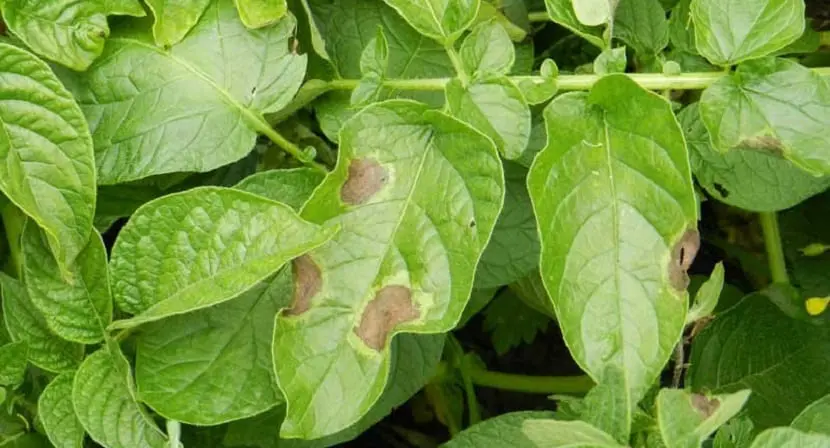Both in gardening and in agriculture, the use of fungicides to prevent possible fungal infestations is the order of the day. It is true that it is better to combat these pests with some techniques that do not require the use of chemicals. However, at other times it is unavoidable.
In this case, I come to talk to you about copper fungicides. What is this fungicide and when should we use it?
Index
- 1 copper fungicide
- 2 What is this fungicide used for in agriculture?
- 3 How should we use this fungicide?
- 4 Mode of application of copper oxychloride
copper fungicide

This fungicide is composed of copper oxychloride, which is a solid, crystalline substance that has a greenish color. It can be extracted naturally from deposits, although it can also be obtained after the corrosion of certain metals. In this case, it is not extracted in this way, since we are talking about the oxidation of metals, it would not have much use in agriculture or gardening. Its chemical formula is Cu2(OH)3Cl.
What is this fungicide used for in agriculture?
The main and most obvious function is to destroy fungi that negatively affect crops , or in the case of gardening, our plants. Its fungicidal action is the most used. In organic farming, the component that performs the function of fungicide is sulfur.
But copper oxychloride has another function more unknown to people who are not in the world of livestock. It is also used to supplement the feeding of some animals. And you will ask yourself, how can they feed copper oxychloride to an animal? It doesn’t work exactly like that. This fungicide is used to treat some diseases that can affect cattle and that have to do with a fungus.
As for the crop, there is a wide list of fungi that are affected by copper oxychloride and that we can get rid of if we fertilize the crops with this fungicide. Among the list of fungi are:
- alternate
- anthracnose
- bacteriosis
- Mildew
- dent or screening
- Monilia
- Mottled
- Watery
- fomopsis
How should we use this fungicide?

In order to use it correctly and use the correct concentration, we must look at it well. They can range from 16 to 70% concentration depending on the purity of the copper oxychloride in the mixture. It is also necessary to analyze for which crops they are most useful and for which they are not.
Through the magrama page you can learn about the uses that can be given to copper oxychloride here as long as your crops are in Spain.
We must mention that, above all, this natural product has a preventive action function. That is, its field of action is quite large and persistent in the plant, but as long as the fungus has not already attacked the plant.
The action stage of copper begins with the germination of fungal spores, hence its action is limited to preventing the appearance of diseases of fungal origin. The mode of action is simple, various fungi in their initial stages are unable to grow or reproduce when the copper content is above a certain level.
Mode of application of copper oxychloride

The mode of application of this fungicide is quite simple. As it comes in powder, we just have to make sure to sprinkle all the vegetable mass to prevent any type of spore from developing on it. Yes, it is true that using a powder fungicide may be more cumbersome than using a liquid one. However, one point in favor of this fungicide is that it is accepted in organic farming, since it comes from nature and does not pollute too much.
There are farmers who use a duster to use them, others a sock or a pot with a small hole. It should not be used in summer since its action could cause the roots to burn.
As you can see there are fungicides whose application is accepted in organic farming. Therefore, if you want to use a fungicide that does not affect the environment, copper oxychloride could be a good choice.

